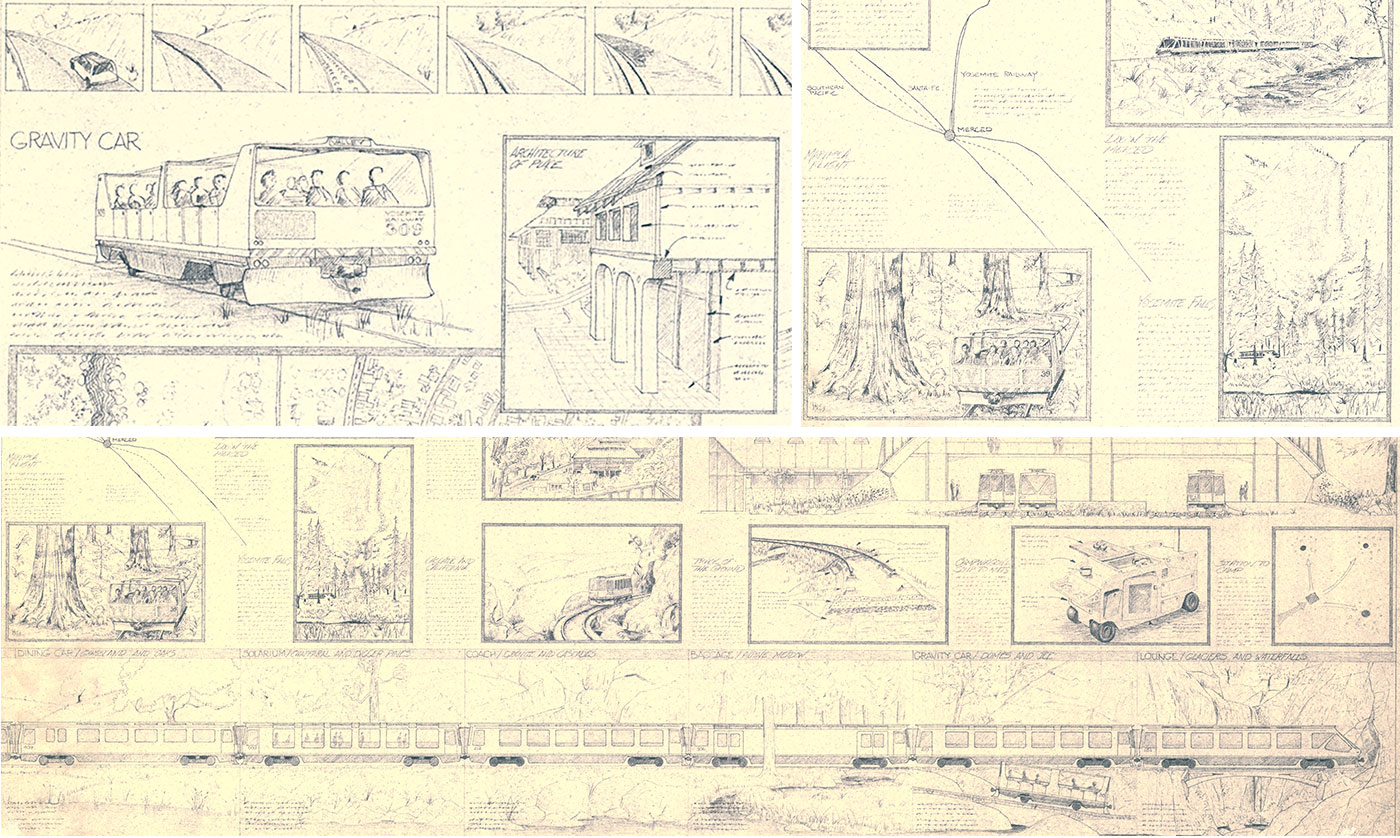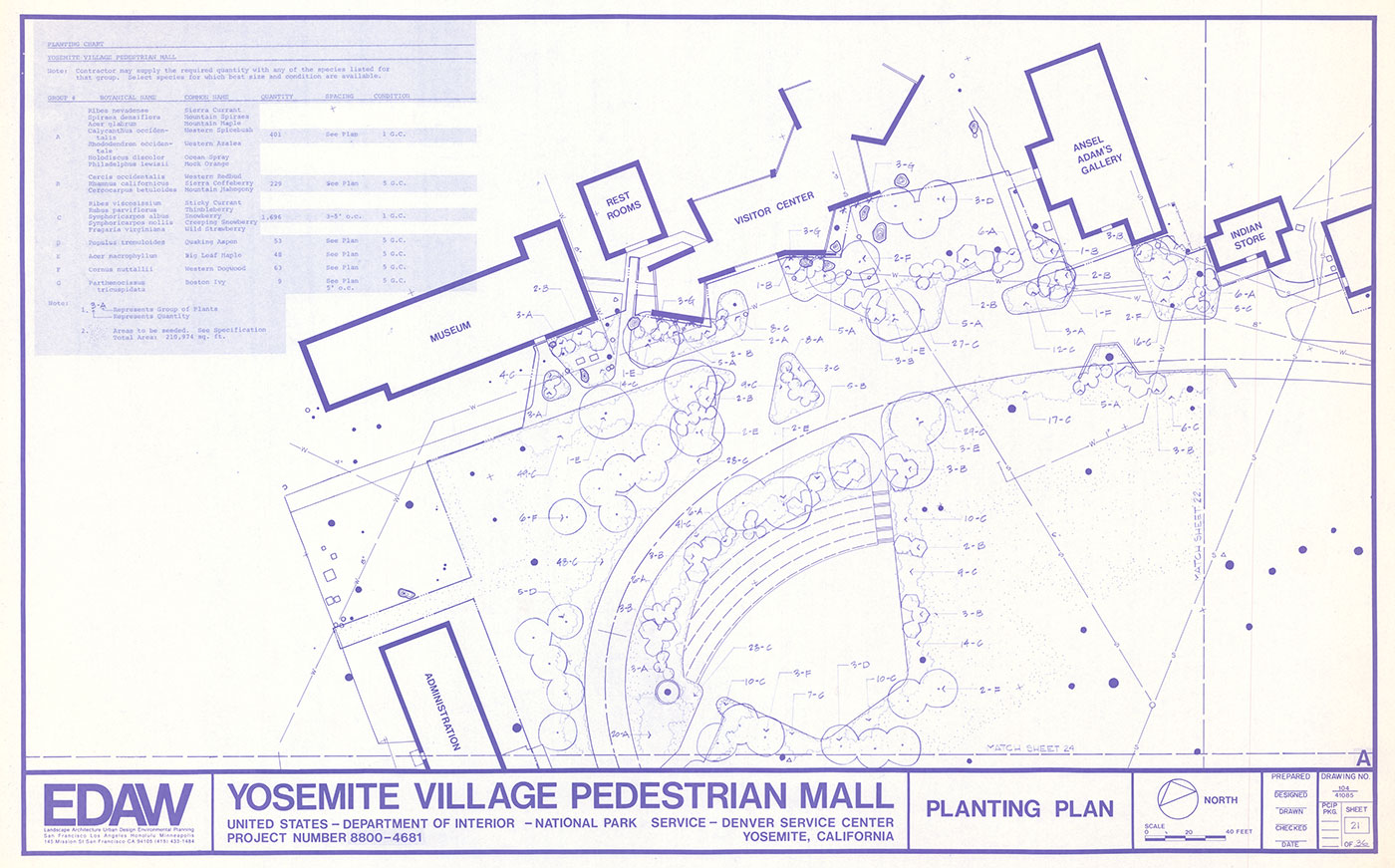As part of the team digitizing the Yosemite Archives’ historic map collection, I have seen a lot of blueprints. You name it: museums, trails, campgrounds, mailboxes… if it was built in the park, it probably has a blueprint in the archives! As we pulled documents from their drawers to feed through the digital scanner and record their metadata, I was surprised by the many blueprints that had small notes folded around them. Left by researchers at some point in time, these notes often read two daunting words: “Never constructed.”
I feel a sense of novelty while sifting through these unconstructed plans. I love to imagine what the park would look and feel like if these ideas had been implemented. Look at the proposal below for a “futuristic” tram service and picture it today. (It’s crazy what “futuristic” meant in 1990.) Visitors from the San Francisco Bay Area would have a fast, direct public transit option to the park. Being more accessible, would the park see a more diverse crowd? Perhaps there would be fewer cars – would that influence wild animals in Yosemite Valley, or reduce air pollution? I wonder how seriously this proposal was taken, and what factors went into its rejection.

Travel to another alternate universe with me. This one involves Glacier Point, a famous clifftop that overlooks Yosemite Valley and offers an iconic view of Half Dome. To get there today there are a few options. Hikers may choose to walk the Four Mile Trail (a misnomer – it is 4.8 miles one-way!) that zigzags up the side of the valley or take the longer Panorama Trail that bypasses multiple waterfalls. Most visitors drive the 30-mile (1 hour) route that winds up from the valley through the Wawona Tunnel and past Badger Pass to Glacier Point, while some pay for the Glacier Point Tour which takes you there by bus. In the 1930s, some people envisioned a gondola to take visitors directly from Yosemite Valley to Glacier Point. This was met with obvious concern for environmental disturbance and the impact to the valley’s appearance. In hindsight, would a gondola be more destructive than the disturbance of road traffic and infrastructure? Concepts like this gondola spark interesting debate around the balance between park development, visitor experience, and environmental conservation.


When I first pondered these “never constructed” materials, I couldn’t help but regard them as a little useless. They cannot help you navigate the park and could not act as a reference for what the park was like in the past. Furthermore, the Yosemite Archives struggles with storage space for all its documents and historic objects. Walkways are already filling up with boxes of records! So why does the archive keep these items?
There is a sneaky importance to keeping these items. Between the pages of rejected projects and dreams of futuristic trains you can find evidence of the opinion the park holds about our society’s relationship with nature. There is value in seeing what options were on the table when the park said “no” to some and “yes” to one. Keeping evidence of these discussions is what maintains the history of park decision-making.
In the Yosemite Archives you find history of the park dating back to before the National Park Service (NPS) was established. Looking at blueprints, maps, records, documents, film, drawings, and historic objects gives us insight in to how the park community approaches environmental protection and fostering visitor engagement. In my six months working for the Yosemite Archives, I have been overwhelmed and impressed with the amount of content saved by the park. I have learned that managing this content is not at the forefront of most peoples’ minds, yet the organization and safekeeping of these files is crucial. As my project has focused on increasing accessibility to the Yosemite Archives, I hope that more people will view what lives in the archive collection, better understand the importance of archives, and explore how archives can strengthen personal and national relationships with our parks.
